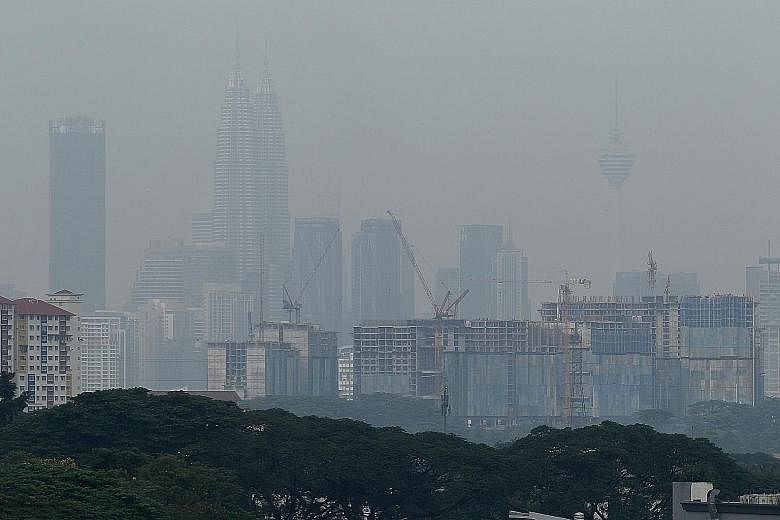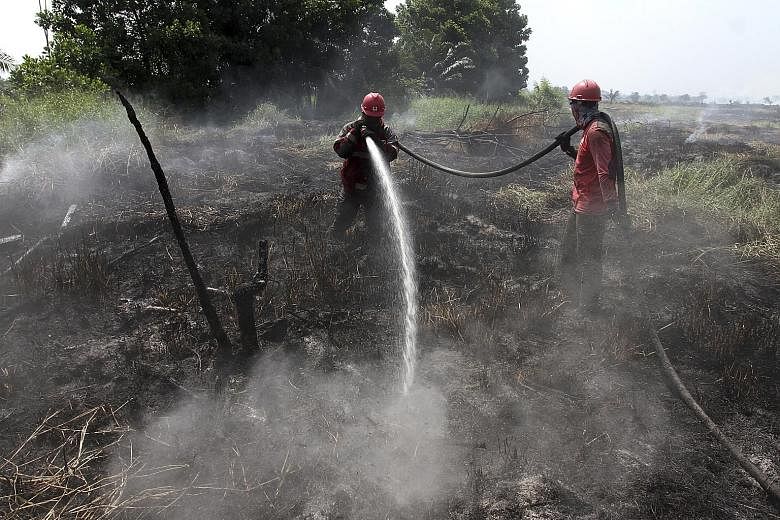There might be haze soon, and it might linger for a while because of drier-than-normal conditions.
The Meteorological Service Singapore (MSS) has spotted several hot spots with smoke plumes in Riau and Jambi provinces in Sumatra, and the southern parts of Kalimantan in Borneo.
With the dry season set to peak this month, six Indonesian provinces, including three close to Singapore, have already declared a state of emergency to battle land and forest fires.
Troops and aircraft have been deployed to combat the blazes, according to reports.
Indonesia's National Disaster Management Agency (BNPB) said it detected 433 hot spots across the country on Tuesday morning. In Pekanbaru, the capital of Riau province in Sumatra, some teachers and schoolchildren have had to wear masks in classrooms and were urged to limit outdoor activity because of haze concerns, the Antara state news agency reported.
The fires in Riau have also led to haze in several areas in Malaysia, including in Selangor, Kuala Lumpur, Putrajaya, Negeri Sembilan and Penang.
"The haze is caused by a moderate amount of smog moving from hot spots in the central and southern parts of Sumatra due to the south-west monsoon winds," Malaysian Meteorological Department director-general Jailan Simon was quoted as saying in The Star daily yesterday.
The air quality rose to unhealthy levels in at least two places in Malaysia yesterday, with the Air Pollutant Index (API) hitting 104 in Rompin in Pahang, and 110 in Johan Setia in Klang. Other areas with relatively high API levels were Nilai in Negeri Sembilan (89), Cheras (85) and Putrajaya (85). A reading above 50 indicates moderate air quality, while that above 100 indicates unhealthy air.
Several factors will decide if Singapore and its surrounding regions will be enveloped by haze if the forest fires in Indonesia worsen. These include the proximity and extent of the fires, the direction and strength of prevailing winds, and the incidence of rain.
The MSS, which is part of the National Environment Agency, has forecast drier-than-normal weather conditions for Singapore and the surrounding region, including Sumatra and Kalimantan, in the coming weeks.
This means that the hot weather Singapore has been experiencing is set to persist, as drier weather can be expected from this month to October.
Last month was Singapore's second warmest July on record, with an average temperature of 29 deg C.
The total rainfall recorded for the month at the climate station in Changi was 92 per cent below the long-term average, making it the driest July since 1997.
Meteorologists at the MSS believe a key reason for the dry weather in Singapore could be due to the Indian Ocean Diopole (IOD) - a phenomenon where there are sustained shifts between the sea surface temperatures of the tropical western and eastern Indian Ocean.
"The IOD varies between three phases - positive, negative and neutral. A positive phase occurs when cooler sea surface temperatures develop in the eastern Indian Ocean, resulting in below normal rainfall in the eastern Indian Ocean and the surrounding region. Each phase occurs every three to five years on average and typically lasts about six months," the MSS said in a media statement.
"The IOD is currently in its positive phase, which leads to drier weather over the areas adjacent to the eastern Indian Ocean, including Sumatra, Malaysia and Singapore. Major climate centres are predicting that the positive phase of the IOD is expected to persist over the coming months," the statement added.



